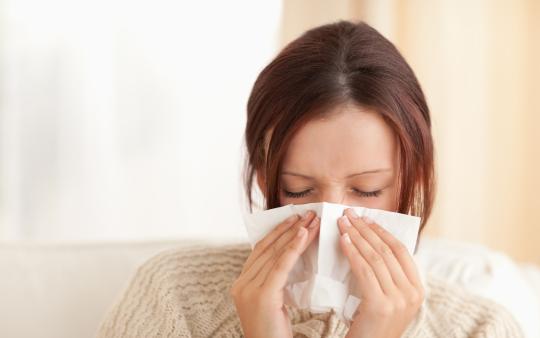What do insomnia, bloating, and hives have in common? They can all be part of a pattern of vague complaints known as histamine intolerance. This is a collection of symptoms that occur when the body detects too much histamine in the blood. It can be a factor in many, seemingly unrelated, chronic symptoms. Did you know histamine can affect multiple body systems at the same time, including digestive, cardiovascular, immune, skin, reproductive, and more?
If you suffer from a long-term symptom that comes and goes and hasn’t resolved with the usual therapies…READ ON!
What is histamine?
Histamine is a compound that is a type of biogenic amine: a substance produced by a living organism made from an amino acid. (Fancy, I know.) It's made and stored in different cells in our bodies, for different functions. In the stomach, it is released to help stomach acid secretion. In the brain, it is released from histamine-releasing neurons, acting as a neurotransmitter, playing a role in our sleep/wake cycle, appetite, and memory. But most of us are familiar with histamine for its role in the immune response. It acts as an inflammatory compound, released in response to an allergen and/or toxic exposure. Stored in specific white blood cells called mast cells and basophils, its release will produce, on various tissues, the classic effects we think of as an allergic response: hello runny nose and watery eyes, redness, swelling, and itching (often associated with hay fever). This occurs as a measure of protection: the body does not want any foreign invaders to stick around, so it releases histamine to trigger the inflammatory cascade to flush the nasties out.
What is histamine intolerance?
Histamine intolerance is a group of complaints related to either an excess amount of histamine, or an abnormal reaction to an average amount. At any given time, we naturally have small amounts of histamine in our body, and at low levels it remains unnoticed. That said, every individual has a histamine level threshold, above which they start to experience symptoms (like itching or redness). Those with a low threshold are considered ‘histamine intolerant’.
The symptoms are many and varied, but common ones include abdominal cramps, diarrhea, anxiety, insomnia, dizziness, vertigo, headaches, hives, eczema, menstrual cramps, nasal congestion, sneezing, itchy eyes, nausea, swelling, racing heart, skin flushing, and others.
Why so intolerant?
Histamine levels can rise for three reasons:
Increased production
This occurs when we are continually surrounded by anything our body determines as ‘foreign’, like the fresh spring air (sadly), for seasonal allergy sufferers.
Increased exposure
Can occur when we are frequently eating foods that are naturally high in histamine.
Insufficient breakdown
A case of the body not doing its job for some reason. Diamine oxidase (DAO) is one of two enzymes that naturally deactivate histamine. Various medications, gastrointestinal conditions, and certain genetic factors can lead to a deficiency in DAO, leaving histamine elevated in the blood.
Additionally, each person’s unique ‘threshold’ or tolerance for histamine is influenced by genetics, GI health (including the balance of gut bacteria), hormone fluctuations, medications (like aspirin or blood pressure drugs), and more.
How is histamine intolerance diagnosed?
As mentioned above, histamine travels throughout the bloodstream, and it can affect the gut, lungs, skin, brain, and heart. When present at levels above the body’s ability to cope, it leads to a wide and rather vague spectrum of possible symptoms. As such, histamine intolerance is often diagnosed only after a series of failed attempts to treat whatever cluster of histamine-related symptoms happen to be present. There is no one perfect lab test to assess it, so the best way forward involves collecting clues and being your own ‘health detective’. Combining a good symptom history with a process of elimination, and some trial and error, is the standard means of assessing whether histamine intolerance may be the culprit.
What's the treatment?
The goal is to decrease the amount of histamine in the body. A damaged GI tract can be a significant root cause of histamine intolerance, so healing the gut is important. This can be done through diet, lifestyle, herbs, and supplementation. Treatment could also include avoidance of known food sensitivities; eradicating overgrowth of detrimental parasites, yeast, or bacteria; replenishing beneficial bacteria; and providing nutrients to decrease inflammation and promote intestinal healing.
Histamine is also naturally found in common foods in a standard Western diet. If you suspect you have histamine intolerance, one of the best interventions is to consume foods that are low in histamines.
Foods high in histamines:
- Fermented alcohol: wine and beer
- Fermented foods: sauerkraut, vinegar, soy sauce, kombucha, miso
- Fermented dairy products: yogurt, kefir
- Vinegar-containing foods: pickles, mayonnaise, olives
- Cured meats: bacon, salami, pepperoni, luncheon meats, hot dogs
- Soured foods: sour cream, sour milk, buttermilk, sourdough bread
- Fruit: citrus fruits, strawberry, banana, papaya, tomato
- Dried fruit: apricots, prunes, dates, figs, raisins
- Aged cheese including goat cheese
- Nuts: walnuts, cashews, peanuts
- Vegetables: avocados, eggplant, spinach
- Meat, poultry, fish (unless freshly caught, gutted, and immediately cooked or frozen)
- Canned foods
- Raw eggs (cooked egg yolks can be tolerated)
- Shellfish
- Chocolate
- Yeast products
Note that this doesn’t have to be a permanent change! I recommend complying for 30-90 days to know if histamine intolerance is truly an issue for you. Healing the root cause of the lowered threshold may even allow most of the foods back into the diet once balance is restored.
As mentioned, insufficient amounts of DAO may also be the issue. Keep in mind that alcohol and caffeine can block this enzyme, so avoidance of these substances is highly recommended. There are DAO supplements on the market that can help stabilize this enzyme directly and therefore clear histamine from the body. Other nutrients/herbs are also routinely used to help decrease the histamine response in the system to help manage symptoms. All of this is best done under the care of a licensed healthcare practitioner.
So think about your own health picture today. Does any of this strike a familiar chord? Could you be histamine intolerant? If so, consider trying out a dietary intervention or speaking with your naturopathic doctor for guidance.






